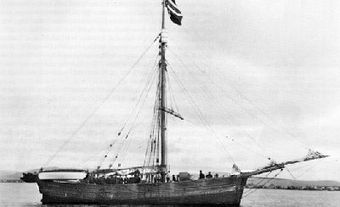Nootka Sound, British Columbia, is an inlet on Vancouver Island's western coast, 270 km northwest of Victoria. This area is known for its natural beauty.
Description
Nootka Sound contains a cluster of forested islands near the mouth of the sound and three deep inlets (Tahsis, Tlupana and Muchalat) penetrate inland. One of these reaches 65 km inland to Strathcona Provincial Park and another to the community of Tahsis.

Early Settlement and Development
The first inhabitants of the region were the Nuu-chah-nulth (Nootka), who made their living by hunting and fishing. They specialize in whaling and were the first Indigenous people in British Columbia to meet Europeans. The coastal environment was particularly bountiful in fish of many varieties.
Early Economy
The sound was first explored by James Cook in 1778, although Peréz Hernandez had approached it 4 years earlier. Cook first called the inlet King George's Sound, then Nootka Sound, misinterpreting ‘Nootka’ as its Indigenous name. Soon after, the region became a centre of trade and then of competition among Russia, Britain and Spain. In 1789, a Spanish force occupied the Sound and built a fort; 2 months later, a British force arrived, and a quarrel developed. In the ensuing Nootka Sound Controversy, Spain eventually agreed to a convention (1794) according to which both nations were free to navigate and fish in the Pacific, to trade and establish settlements. At first, the Nuu-chah-nulth participated in the sea-otter fur trade that followed European explorations, but the introduction of diseases such as smallpox significantly impacted their population.

Present Day
The main Indigenous settlement at Yuquot ("windy place") is still important for the Nuu-chah-nulth. Today, the area features many opportunities for outdoor recreation, such as hiking, kayaking and fishing.
See also Northwest Coast.


 Share on Facebook
Share on Facebook Share on X
Share on X Share by Email
Share by Email Share on Google Classroom
Share on Google Classroom

